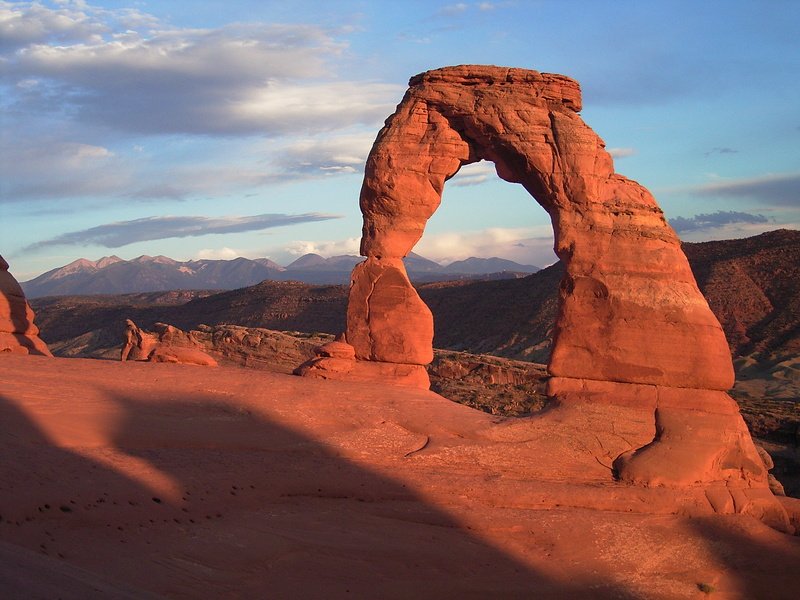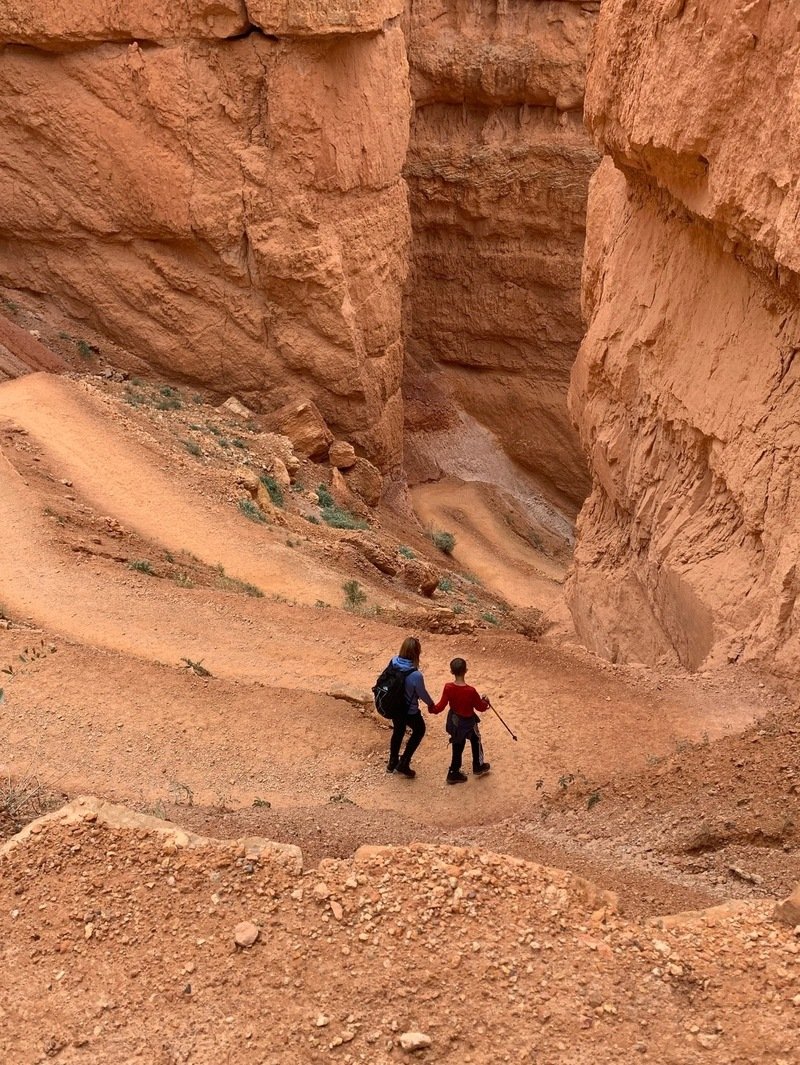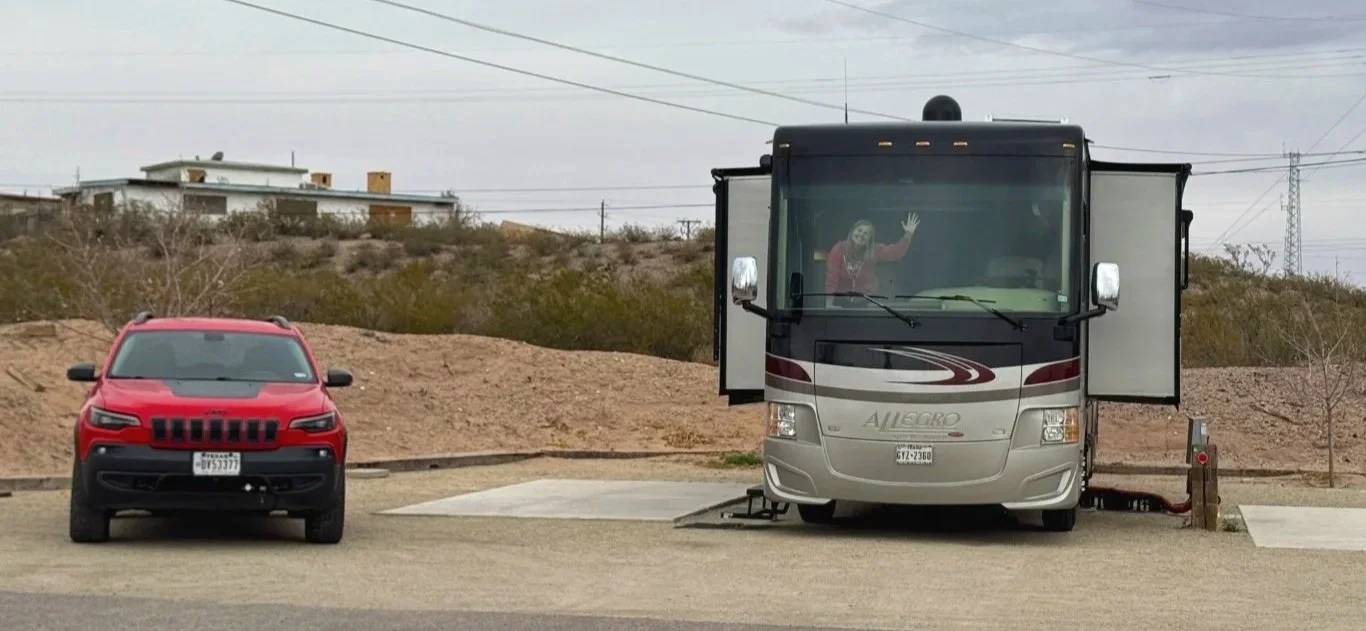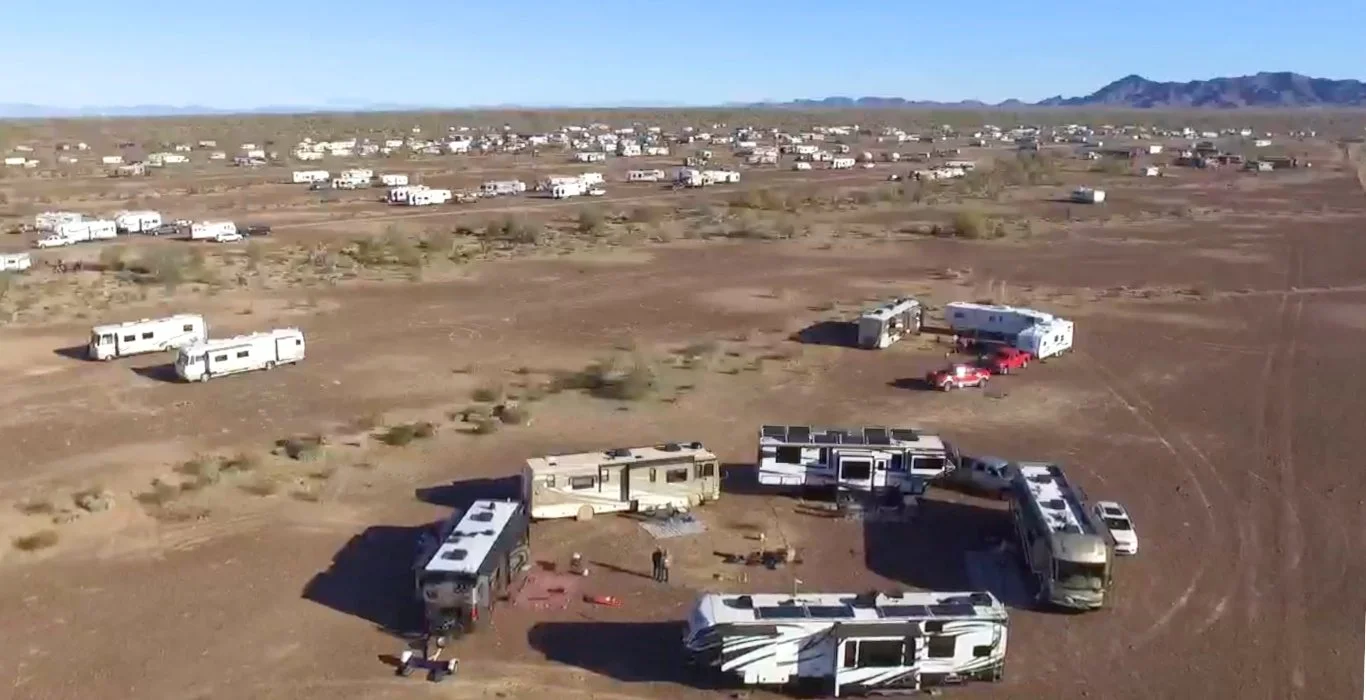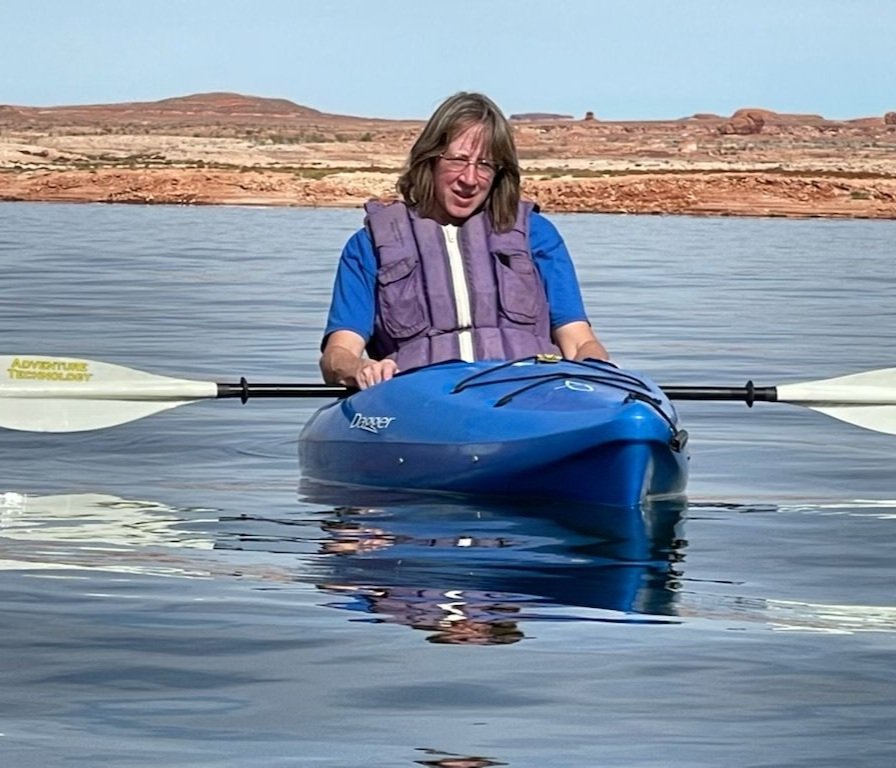Top 10 National Parks You Should NOT Miss
Delicate Arch at sunset in Arches National Park.
Disclosure: The links below may be affiliate links that are at no additional cost to you. When you use our links, we may earn some extra beer money, but it won’t be enough for Phil’s ice cream habit or a batch of Stacy’s famous margaritas (recipe here).
Are you looking for the ultimate outdoors adventure of a lifetime? Look no further than some of America's most iconic national parks. From breathtaking views to captivating wildlife, these natural wonders will provide unforgettable memories that last a lifetime. Whether you are traveling by car, RV, or even boat – there is bound to be a park out there waiting for you to explore its many wild offerings. So, without further ado – we have the top 10 national parks that you should not miss!
Trip Planning
Create a bucket list of national parks and other destinations to keep you focused on your future plans. It will also get you excited about your next trip. Of course, there are many more places to see than just these 10 national parks but they are the most beautiful and most sought out of all the national parks.
For more help and ideas for creating your ultimate travel bucket list head to our blog How to Create Your Own Ultimate Bucket List.
The Subway at Zion National Park
1. Zion National Park
At the top of everyone’s bucket list should be Zion National Park. Two years ago my husband and I took a three-week trip through the Utah National Parks. I would highly recommend everyone make time to see these spectacular places. Zion is my favorite, and I am still in awe of its high plateaus, narrow and deep sandstone canyons, and the epic Virgin River.
From its highest point of 8,726 feet at Horse Ranch Mountain to its lowest point at Coal Pits Wash at 3,666 feet, you can see desert, riverbank, multi-species woodlands, and nearly 1,000 species of plants. Its nearby ecosystems include the Mojave Desert, The Great Basin, and the Rocky Mountains.
What to Know When You Go
Cars can’t drive the Zion Canyon scenic drive during peak season in order to eliminate the congestion that you will find in other parks. The shuttle will take you to the different sites and trailheads. I recommend you arrive at the visitor’s center early to ensure you find a parking place. The shuttles starts at 7 a.m.
Zion is home to some famous, or maybe infamous, trails including one of the most dangerous sections called Angel’s Landing. The Chains Section is a ½ mile route set on top of a 1,488-foot rock section. The path provides a chain to hang onto but is only a few feet wide in some places. You will need a permit if you are brave enough to make this trek all the way to the top.
The Scout’s Lookout trail along the West Rim Trail will take you to Angel’s Landing. Scout’s Lookout is a challenging hike but it will allow you to see the section of Angel’s Landing with the chain. It’s the perfect place to watch the daredevils who continue up to Angel’s Landing.
There is also another hike called the Narrows, which is a hike through a slot canyon. There are places you can traverse through water at least waist deep, it sounds like a cool hike. But we did not try this one. It is considered dangerous due to the possibility of flash floods that could trap hikers in the narrow canyon. This may be another great hike for the daredevils among us!
Navajo Loop into Bryce Amphitheater in Bryce Canyon.
2. Bryce Canyon National Park
Bryce Canyon is known for its reddish-colored hoodoos, which are spire-shaped rock formations. You can also see overlooks along the main road for Bryce Amphitheater, Inspiration Point, and Bryce Point, as well as Sunrise Point and Sunset Point. You will find gorgeous views from any of these locations. Hit them at sunrise or sunset for the best views.
What to Know When You Go
Arriving early in the morning or late in the day to find parking throughout the park is the best plan.
One of the best hikes at Bryce is a trail that ran into the canyon from Sunrise Point to Sunset Point. You can expect to have a lot of steep climbs on this trail, although the website calls it moderate. The climb back to the top at the end was short, about 7/10ths of a mile but very steep with numerous switchbacks. If you like to hike, you will love Bryce Canyon.
Just outside Bryce Canyon is Red Canyon. It is a great place to hike with your four-legged friends.
Arches National Park has more than 2,000 natural sandstone arches.
3. Arches National Park
Arches National Park is just north of Moab and is known for more than 2,000 natural sandstone arches, including Delicate Arch, Devils Garden, and other sandstone features such as Balanced Rock, the Three Gossips, and many more. The park is bordered by the Colorado River to the south.
What to Know When You Go
If hiking is not your thing, you can see much of the beautiful scenery with a car ride. There are plenty of overlooks that allow you to enjoy the view and take pictures of the unique rock formations.
Pets are allowed in your vehicle and in the parking areas but not on the trails.
If you go in October, or any part of peak season, be prepared for crowds. The line to get into the park will be long, and it will be difficult to find parking near the trailheads.
Hikers will find trails of all levels that will take you closer to the arches. There are many challenging trails in this park but also trails that are easier for every ability. Trails such as Devils Garden are paved walkways that become quite difficult. Some of the trails also have steep terrain. When you arrive at the park, be sure to pick up a park map. It will provide details of each trail so you can decide which trail is best for you and your family.
The Park Avenue Trail was a steep climb in and out of a beautiful canyon where we walked between rock formations. It was one of our favorites. The trail to the Delicate Arch was a bit intimidating from a distance. Part of the trail took you over a steep, long rock slab. Before getting to the arch, you also had to traverse a narrow path with a steep drop-off on one side and a canyon wall on the other. Once you arrived at the arch, you can climb into a semi-steep bowl and get right up under the arch.
Vernal Falls at Yosemite National Park.
4. Yosemite National Park
Yosemite National Park is known for its beautiful scenery. It will not disappoint. There are canyons, cliffs, domes, rivers, lakes, waterfalls, lush meadows, wildlife, and forests. The park’s features include massive granite domes and glacial features which have familiar names. El Capitan, Half Dome, and Bridalveil Falls are Yosemite staples but there is so much more waiting to be explored.
Located in California’s Sierra Nevada mountains, this is one of the most impressive national parks in the U.S. It spans nearly 1,200 square miles with unspoiled wilderness, including mountains, valleys, forests, and waterfalls.
What to Know When You Go
Recently Yosemite has closed many roads due to flooding, spring cleanup, and the effects of a lot of snow over the winter. So when making plans to visit be sure to check Yosemite’s road closures.
This is another one of those “get there early” parks. Cars will fill the roads, especially with closures, causing traffic and congestion. You can get the latest update on park traffic and delays on Yosemite’s website.
Don’t miss the giant and ancient sequoia trees. Check out Yosemite Falls where you can cool off under its spray. The upper fall, middle cascades, and lower fall drop some 2,425 feet in total, and it is one of the tallest waterfalls in the U.S.
As we traveled that windy road along the Merced River, we were very impressed with this force of nature. The river went beyond a babbling brook to what I called a very “raging” river.
Check out the shops, restaurants, and lodging and enjoy the museum and Ansel Adams Gallery with prints of the photographer’s renowned black and white landscapes of the area.
Today is Someday’s Phil & Stacy spent three weeks outside Yosemite. They discovered their love for the area and found their new favorite campground. Check out their Yosemite blogs for details on hiking trails for all levels and a complete guide to finding camping in Yosemite.
Every view of the Grand Canyon is spectacular.
5. Grand Canyon National Park
Grand Canyon National Park is a World Heritage Site that encompasses 1,218,375 acres on the Colorado Plateau in northwestern Arizona. The land is semi-arid and consists of raised plateaus and structural basins.
The bands of red rock that make up the Grand Canyon give visitors a peek into millions of years of geological history. It is a place that will invoke plenty of oohs and ahhs, and it might even garner a few goosebumps as you take in the scenery. The sheer size of the Grand Canyon is something to behold. It is around a mile deep and an average of 10 miles wide and stretches almost 300 miles.
What to Know When You Go
The Grand Canyon welcomes more than 5 million visitors every year and is one of the most visited National Parks in the world. Crowds are a thing at this national park too. Best to arrive early or later in the evening to avoid the crowds.
If you are a first-time visitor, check out the South Rim for the beautiful views, great visitor services, and family-oriented activities. The South Rim is 7,000 feet in elevation, is open year-round, and has four distinct seasons.
Make your first stop at Mather Point, an overlook adjacent to the visitor center. It provides epic panoramic views of the canyon. You will want to pull out your camera when you see the Coconino Sandstone and Kaibab Limestone rock layers, as well as the first look a mile below into the canyon. This overlook has two lookout points. It was named for Stephen Mather, the first director of the National Park Service and one of the first advocates for establishing the Grand Canyon National Park.
If you are up for a hike, Bright Angel Trail begins at Grand Canyon Village and is one of the most popular hiking trails in this national park. It descends into the canyon for 8 miles and connects with the Tonto Trail, The Plateau Point Trail, and River Trail. As this trail is quite strenuous, you might want to join a mule train and descend with four legs under you.
Phantom Ranch is a popular destination at the bottom of the canyon. Just remember if you hike, going down is the easy part. The climb up and out of the canyon will be much more difficult. There are multiple rest houses located along the trail to the Colorado River.
If you aren’t a hiker, don’t worry. You can visit the Skywalk on the West Rim This popular lookout is on the Hualapai Reservation and costs $60 to visit the Skywalk and tribal park. Photos are not allowed with your phone or camera. You may purchase pictures from the gift shop. It is a unique, beautiful experience that brings important income to the reservation, so it is an experience worth considering.
There are also many great overlooks and even a helicopter tour. A highlight would be to watch the sunset from Mather Point. Don’t forget to make time for stargazing. The Grand Canyon is an International Dark Sky Park.
Bison near a hot spring at Yellowstone National Park.
6. Yellowstone National Park
Yellowstone seems to be the “granddaddy” of all the national parks. It’s one of the more popular national parks
Yellowstone National Park preserves more than 10,000 hydrothermal features. It sits atop a dormant volcano and is home to more geysers and hot springs than any other place on Earth. Wildlife abounds at Yellowstone and includes America’s largest buffalo herd, grizzly bears, wolves, and more.
What to Know When You Go
Yellowstone National Park does not have a shuttle system but does offer a bus tour to popular sites. You can also drive your own vehicle. A 7-day pass costs $35 per vehicle and does not include entrance into nearby Grand Teton National Park which is also $35 for 7 days. Another option is the annual National Park Pass. It is $80 and will allow entry into all national parks for a year.
No trip to Yellowstone would be complete without visiting Old Faithful, the most famous geyser in the world. It erupts every 35 to 120 minutes and can vary in height from 106 to 184 feet. The water temperature can reach 204 degrees and the steam can reach 350 degrees.
Another can’t-miss area is the Grand Prismatic Spring. This is the largest hot spring in the U.S. and the third largest in the world. Colors created by bacteria that live in this mineral-rich water are spectacular. The color is determined by the temperature of the water.
For more details on the best way to visit Yellowstone check out Top 10 Yellowstone Tips: Know Before You Go.
7. Acadia National Park
From breathtaking coastal scenery with rocky cliffs, sandy beaches, and picturesque islands, to granite-domed mountains, woodlands, lakes, and ocean shoreline, Acadia National Park is definitely a bucket list national park.
The park is home to many hiking trails, most of which are dog-friendly. The Acadia National Park Loop Road offers spectacular views of the park’s natural beauty.
What to Know When You Go
Acadia National Park is one of the top ten most popular national parks in the U.S. with more than 4 million visitors each year. Cadillac Summit Road, a popular park destination, requires that vehicles have a reservation as well as a park entrance pass. Special vehicle reservations can be purchased online at recreation.gov for $6. They are not available for purchase at the park and they fill up fast during peak times. Vehicle registration is not required for any other areas of the park.
Acadia also provides the Island Explorer. It is the perfect transportation to take throughout the park. It is a bus powered by propane that reduces traffic, congestion, and air pollution. You can find out more here.
Little Long Pond is a great place to take your dog for exercise.
Cadillac Summit Road is a three-mile drive to the top of the highest peak in the park. You will enjoy scenic stops all along the drive. At the top, there are restrooms, a gift shop, and scenic overlooks connected by paved walks. If you can, make your reservation during sunrise or sunset. You will not be disappointed.
If you like to hike, there are more than 150 miles of trails at Acadia National Park. You can find challenging hikes from sea level to the summit. You can also find easy strolls along the coast and around lakes.
One of our favorite places is a 1,000-acre park named Little Long Pond. It is just outside the National Park and it’s perfect for anyone with four-legged friends. Dogs are allowed off-leash as long as they are under your voice control. Pets can swim in the pond, splash in the stream, or hike the trails and carriage roads. The park isn’t well marked but it’s well known so it can be busy.
If biking is your thing, there are miles of carriage roads and dirt fire roads perfect for pedal lovers. If you enjoy birdwatching or stargazing, Acadia National Park is the perfect place for that as well.
Check out the Cades Cover Waterfall Hike while in the Smoky Mountain National Park.
8. Smoky Mountain National Park
Smoky Mountain National Park encompasses parts of North Carolina and Tennessee. The park straddles the ridgeline of the Great Smoky Mountains, part of the Blue Ridge Mountains, which are a division of the larger Appalachian Mountain chain.
The park encompasses 522,419 acres making it one of the largest protected areas in the eastern U.S. You will find park entrances along U.S. Highway 441 in the towns of Gatlinburg, Tennessee, and Cherokee, North Carolina.
The park is internationally recognized for its mountains, waterfalls, biodiversity, and forests, as well as historical structures that have been preserved.
It is the most visited park in the U.S. with some 14 million visitors per year and anchors a large tourism industry based in Sevier County, Tennessee.
What to Know When You Go
Don’t miss the view from some of the highest mountains in eastern North America including Clingmans Dome, Mount Guyot, and Mount Le Conte.
Clingman’s Dome is one of the park’s most visited attractions. The panoramic views from this outlook are so beautiful. For the best views schedule your trip in the fall during the peak of the color change. You won’t be disappointed.
If you want a really iconic Smoky Mountain hiking experience, and you are feeling ambitious, trek the Alum Cave Trail to Mount Le Conte for some of the park’s most impressive views. An elevation climb of 2,763 feet will take you to the 6,593-foot summit. As you go, observe the unique geological features, rosebay rhododendron, and more. Highlights include Arch Rock, a view of The Eye of the Needle, and Alum Cave.
Cades Cove Loop is another must-see. The 11-mile loop will allow you to not only see the beautiful landscape but also stop to explore preserved historic buildings dating back to the early 1820s. You can drive the loop in your vehicle or another option is to bike the loop! The park closes the road for bikers every Wednesday from May 3 to September 27, 2023. You can bring your own bike or rent one ahead of time.
Cades Cove is a very popular drive that gets very congested. There is only one way in and out and traffic frequently comes to a halt. If you arrive in peak hours expect to be on the loop for up to 2 hours.
Don’t forget to check out major attractions including Dollywood, the second-most visited tourist attraction in Tennessee.
Even the mountain goat enjoys the view at Glacier National Park.
9. Glacier National Park
As the country’s 10th national park, Glacier National Park has to be seen to truly know its natural beauty. Nearly one million acres of glacier-carved peaks and valleys, pristine turquoise lakes and streams, and dense ancient forests have been preserved for all to enjoy. Glacier is also incredibly diverse with a wide variety of activities to offer. It is truly an outdoor lover’s paradise.
It’s easy to see why this park is known as the “Crown of the Continent.”
What to Know When You Go
The best time to visit Glacier National Park is late June to mid-September. At this time, all park lodges, visitor centers, campgrounds, roads, and hiking trails will be open and the crowds small. If you arrive in mid-summer the park can be crowded.
The main attraction in Glacier National Park is Going-to-the-Sun Road. The Sun Road travels 50 miles from West Glacier on the West Side to Saint Mary on the east side. You will find plenty of pull-offs for scenic views and photos.
Lake McDonald is another visitor favorite. At 10 miles long and nearly 500 feet deep, it is the largest lake in the park. Its clear blue waters are surrounded by high peaks making it a very picture-worthy location. The lake’s colored rocks in shades of red, green, and blue fill the eyes with beauty and color.
Glacier has more than 700 miles of hiking trails which provide scenic views nearly every step of the way. You can take a long backpacking trip or a short hike, depending on your preference and skill level. Glacier also offers biking, fishing, cross-country skiing, and much more.
Glacier is home to 71 species of mammals and the park’s ecosystem has essentially remained undisturbed for decades. This is thanks to its large acreage and early protection efforts.
Spend as much time as you can on the water at Lake Powell.
10. Lake Powell
While Lake Powell is not a National Park, it is an iconic U.S. treasure that is worthy of the list.
The best parts of Lake Powell are found on the water. Our first day was spent in our kayaks on the water enjoying the canyon views. But there are many beautiful canyons that we can’t get to with our kayaks. So we rented a boat from Bullfrog Marina to explore more of what Lake Powell has to offer. You will find several marinas in Lake Powell that will offer boat rentals, kayak rentals, and more.
The views from the boat were spectacular. The water level of Lake Powell was at an all-time low, some 150 feet below the full pool, but still deep enough to get into the many canyons. Thankfully, the level has risen and much of the lake’s popularity is back.
Phil and Stacy also visited Lake Powell with Chad and Tara from Changing Lanes. You can see more in the video below. Also, the campground they stayed at on Lake Powell made it into their top 21 campsites. See them all here, 21 Favorite Camping Spots Across the US.
Bonus national park tips
If you want to stay in the national parks reserve your cabin, campsite, or room early. Campsites book a year out. If you are looking for help finding a site CampScanner can help you out. It will scan the national park sites and notify you when a spot opens up. If you still can’t get into the national park, you will find National Forest campgrounds and private campgrounds outside most of the parks.
Plan your stay so you can take advantage of as much “openness” as possible. This could mean something different for everyone. Visiting the parks during off-peak times will mean fewer crowds and open roads and trails. But it also means some trails and parts of the park may be closed due to heavy winter snows, road repairs, reduced staff, and general cleanup. So if you want to visit when everything is open then peak season is your best option.
Most of these parks don’t allow pets on trails or specific areas. Each park is different so check the park info before you bring your pet inside. Acadia National Park is the most pet friendly of all the National Parks. Dogs can go on nearly every trail, except the ones with ropes and climbing ladders.
No matter which national park you decide to visit next, have fun, take pictures, unplug, and make beautiful memories with the ones you love.
GET MORE TRAVEL IDEAS, TIPS, UPDATES, DISCOUNTS, PERKS, AND MORE!
Every Saturday, Phil & Stacy publish the Today Is Someday Newsletter, where they share weekly articles about all things RV and travel. Each week they scour the internet for articles that will inspire and inform you. They also share discounts, sales, and freebies! So don’t miss out! Sign up for the newsletter below.
About the Author: Terri Nighswonger and her husband, Todd, are well-traveled RVers and work campers. They've work camped from Maine to Arizona with their Cavalier King Charles Spaniel, Newton, and their Minnie Australian Shepherd, Remi.
They love Arizona, where winter coats are a thing of the past. They plan to enjoy the west for a while. Writing is Terri's passion, but she also loves hiking, kayaking, walking her dogs, and anything she can do outdoors.


